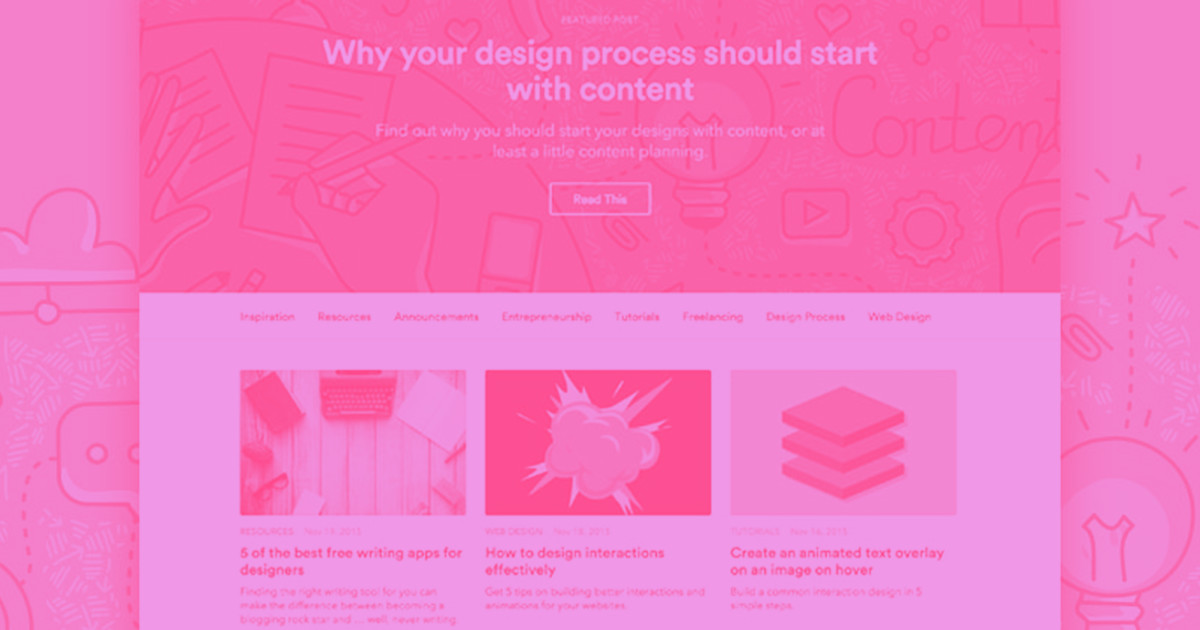New York-based Correlated is on a mission to help product-led companies drive revenue.
The Correlated platform uses real-time behavioral data to identify when customers may be ready for upgrades or expansion, which empowers sales teams to reach the right accounts with the right message at the right time via orchestrated workflows.
Founded in 2020, Correlated has used Webflow to power its marketing website since day one, when the company launched with a simple, single-page design. Even when Breezy Beaumont, Head of Growth and Marketing, joined Correlated and kicked off a project to redesign and rebuild the more robust website — she and her team chose to double down on Webflow.
For Breezy and the Correlated team, Webflow’s functionality and how it organized and managed content was a major sticking point for them, especially during the redesign. “So many CMSs like WordPress were built for the early Internet, where you only had a simple website and a blog,” said Breezy. “But Webflow uses collections that allow you to have multiple sets of information, which sets it apart. Yes, we have a blog, but we also have a resource center and a podcast page and an interview series, and we can use Webflow to manage all of that content without having to download additional plugins, all out of the box.”
As a high-growth startup where change is the only constant, Breezy knew they needed a website that could change direction over time, adapt to new kinds of content and marketing activity, and be quickly edited and updated — all within their small, in-house team.
The Correlated team was already fans of Webflow’s robust flexibility and helpful training resources, so they chose to rebuild their entire website from scratch within Webflow.
Building for growth with Webflow
Startups and small companies rarely have enough hands, so Breezy and her team appreciated that Webflow empowered them to scale their website efficiently alongside their high-growth company. The Correlated team doesn’t need to rely on an outside vendor to update their site, which is usually slower and more expensive. And certain Webflow features make it especially easy to scale, including:
Symbols
At early growth startups like Correlated, product positioning evolves constantly and new features roll out regularly. Breezy and her team are able to update specific elements of their content en masse by using Symbols in Webflow.
Breezy explains it in this way: “If you’re talking about integrations in multiple places on your website, do you really want to go and find and update all 16 pages every time you add an integration?” We use Symbols in Webflow to update that content once, and then it’s updated throughout the site. It’s an efficient way to be able to scale your website as you grow and not have to create a really long to-do list for yourself.”



















Get started for free
Create custom, scalable websites — without writing code. Start building in Webflow.
Security
At previous companies, Breezy frequently relied on downloaded plugins to create the kind of content she wanted — opening up security risks and requiring the support of additional teams to monitor and maintain plugins. Fortunately, Webflow’s advanced security and compliance features enable both small teams and large organizations to feel safe and focus their energy on doing their best work.
“If you’re downloading plugins, then you’re adding security vulnerabilities to your website,” Breezy said. “And that’s something I don’t have to worry about now with Webflow.”
Training and tutorials with Webflow University
The Correlated team is continually exploring new content types like podcasts and interviews. They use Webflow Collections to manage and organize their work — no extra resources required.
“Webflow is easy enough for the layperson to learn how to use it without putting in a huge amount of time,” Breezy said. “But if you are curious, with just a little bit of digging, you can become a web designer within Webflow.”
When Correlated launched a podcast, Breezy was able to update the website to support their new content collection by herself, with just a little help from a few Webflow University videos. “I was able to poke around a bit and figure out how to use the structure that was already built out for our blog to set up our podcast,” Breezy said. “So now we have a whole podcast section on our website that doesn't require any outside developers.”
Final advice for high-growth companies
As a veteran of rapid-growth startups, Breezy has one specific word of advice for companies with small teams, limited resources, and the need to scale: avoid custom-coded websites.
“If I talk to a startup with a custom-coded website, I usually recommend they just scrap it,” said Breezy. “You want your website to be malleable as you grow. You need to have some level of a template built out that you can add new pages to, building off a baseline but being able to take your site in a different direction if you need to. You can have custom elements, but your entire website cannot be custom, or else you can’t make those edits on your own team.”































